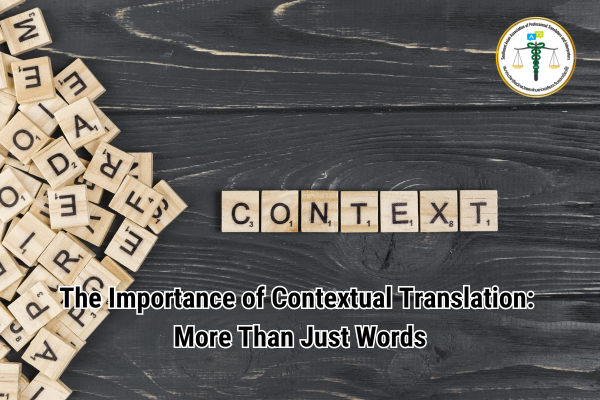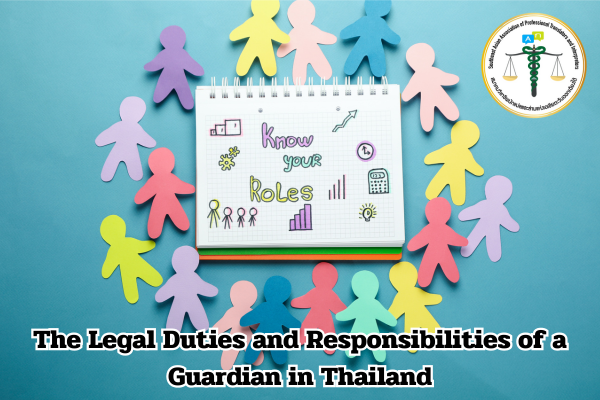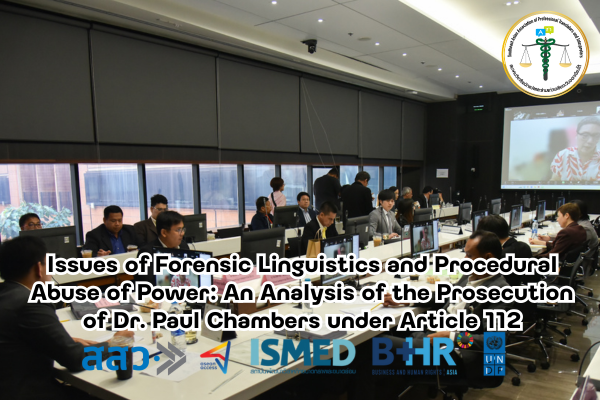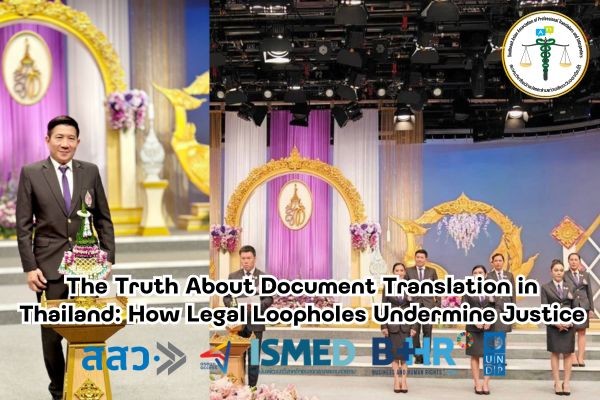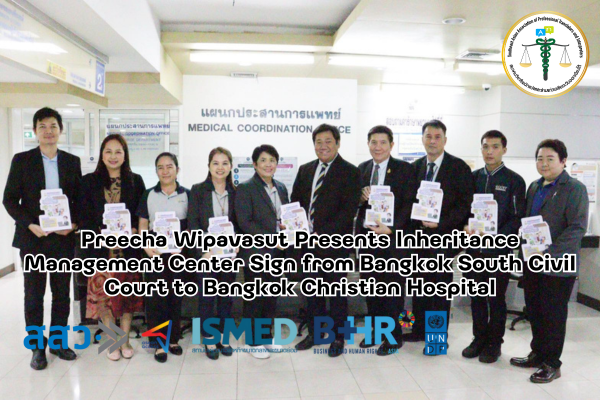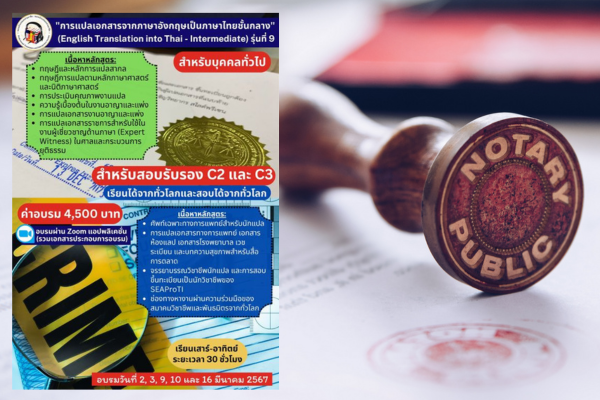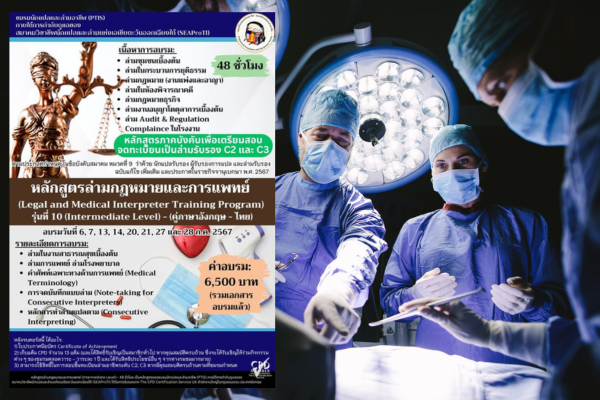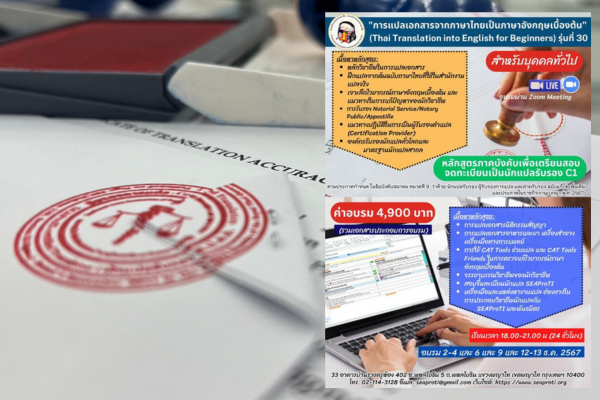The Importance of Contextual Translation: More Than Just Words
3 February 2025, Bangkok – Translation is not just about replacing words from one language to another; it is an art that requires a deep understanding of culture, intent, and, most importantly, context. Without context, translations can lead to misunderstandings, errors, or even comical mistakes. So, what exactly is “contextual translation,” and why is it so crucial?
What Is Contextual Translation?
Contextual translation considers the situation or environment in which a text appears, ensuring accurate meaning and intent are conveyed. It goes beyond word-for-word translation, requiring an understanding of how the text is used and what message it aims to deliver.
There are three key types of context that translators must consider:
-
Linguistic Context – The surrounding words and sentences influence meaning. For instance, the word “bank” in English could refer to a financial institution or the side of a river, depending on the context.
-
Cultural Context – The customs, values, and societal norms of a language’s speakers affect the meaning of words and expressions.
-
Situational Context – The specific environment in which the text is used, such as legal documents versus casual conversations, impacts the level of formality and word choice.
Why Is Context Important in Translation?
1. Preventing Misinterpretation
Translation without context can lead to confusion or miscommunication. For example, the English phrase “break a leg” is a way of wishing someone good luck. If translated literally, it could imply injury rather than encouragement.
2. Maintaining the Original Intent
Every text has a purpose—whether to inform, persuade, or entertain. Without considering context, tone and intent can be lost. For example, a legal document should not be translated using informal language, as this could lead to misinterpretation of its meaning.
3. Conveying Cultural Nuances
Language carries cultural depth and emotions. For instance, the Portuguese word “saudade” expresses a deep sense of longing and nostalgia, with no direct equivalent in English. A good translation must capture the emotional essence of such words.
Examples of Contextual Translation in Action
1. Marketing Blunders
A famous example of neglecting context is Pepsi’s slogan, “Come Alive with the Pepsi Generation.” When translated into Chinese, it reportedly meant, “Pepsi brings your ancestors back from the dead.” This is a clear case of a message getting lost in translation due to a lack of cultural and linguistic awareness.
2. Literary Translation
Literature is filled with symbolism and layered meanings. For example, Shakespeare’s phrase “To be or not to be” is a deep existential question. A literal translation without understanding its philosophical undertones would result in a loss of meaning.
How Professional Translators Handle Context
1. Research and Preparation
Professional translators start by researching the background of the text, its purpose, and the target audience to ensure the right language and expressions are used.
2. Collaboration with Clients
Clear communication with clients is essential. Professional translators ask questions about ambiguous phrases and seek clarification to ensure the translation aligns with the intended meaning.
3. Staying Updated on Language and Culture
Languages and cultures evolve. Skilled translators continuously update their knowledge of new expressions, idioms, and cultural shifts to maintain accuracy and relevance in their translations.
The Role of Technology in Contextual Translation
While AI-driven translation tools have advanced significantly, they still struggle with understanding context. Machine translation tools can handle basic translations but often fail when dealing with complex text, such as poetry, legal documents, or marketing materials. This is where human translators remain irreplaceable, as they can capture nuances, cultural depth, and emotional undertones.
Tips for Achieving Accurate Contextual Translation
To ensure the best translation quality, consider the following tips:
-
Provide Complete Information – Share the full text and its purpose with the translator to avoid misinterpretation.
-
Consider the Target Audience – Understanding the audience helps tailor the language and tone appropriately.
-
Use Professional Translation Services – Skilled translators have the experience to account for linguistic, cultural, and situational context.
Conclusion
Context is the backbone of translation. It bridges the gap between languages, ensuring that words carry their intended meaning while respecting cultural and linguistic differences. Without context, translation becomes a guessing game, leading to miscommunication and missed opportunities.
Whether translating a business document, a conversation, or a literary masterpiece, context is what transforms translation into an art. Next time you come across a perfectly translated text, remember the deep understanding of context behind it!
ความสำคัญของการแปลตามบริบท: ศิลปะที่มากกว่าการแปลคำ
3 กุมภาพันธ์ 2568, กรุงเทพมหานคร – การแปลไม่ใช่เพียงแค่การแทนที่คำจากภาษาหนึ่งไปยังอีกภาษาเท่านั้น แต่เป็นศิลปะที่ต้องใช้ความเข้าใจในวัฒนธรรม เจตนา และสิ่งที่สำคัญที่สุดคือ “บริบท” การแปลที่ไม่มีบริบทอาจทำให้เกิดความเข้าใจผิด หรือแม้กระทั่งเกิดความผิดพลาดที่ร้ายแรง ดังนั้น เรามาทำความเข้าใจกันว่า “การแปลตามบริบท” คืออะไร และเหตุใดจึงสำคัญนัก?
การแปลตามบริบทคืออะไร
การแปลตามบริบทหมายถึงการคำนึงถึงสถานการณ์หรือสภาพแวดล้อมของข้อความนั้น ๆ เพื่อให้สามารถตีความและถ่ายทอดความหมายได้อย่างถูกต้อง ไม่ใช่เพียงแค่แปลคำต่อคำ แต่ต้องเข้าใจว่าข้อความนั้นถูกใช้ในบริบทใดและต้องการสื่ออะไร
มีองค์ประกอบหลักสามประการที่ต้องพิจารณา:
-
บริบททางภาษา – คำและประโยคที่อยู่รอบ ๆ มีอิทธิพลต่อความหมายของคำที่แปล ตัวอย่างเช่น คำว่า “bank” ในภาษาอังกฤษ อาจหมายถึงธนาคารหรือริมแม่น้ำ ขึ้นอยู่กับบริบทของประโยค
-
บริบททางวัฒนธรรม – ขนบธรรมเนียม ค่านิยม และบริบททางสังคมของผู้ใช้ภาษามีผลต่อความหมายของคำและการแปล
-
บริบทตามสถานการณ์ – ข้อความที่ถูกใช้ในสภาพแวดล้อมที่แตกต่างกัน เช่น เอกสารทางกฎหมาย เทียบกับบทสนทนาในชีวิตประจำวัน ย่อมมีระดับภาษาที่แตกต่างกัน
ทำไมบริบทถึงมีความสำคัญในการแปล
1. ป้องกันความเข้าใจผิด
การแปลที่ละเลยบริบทอาจนำไปสู่การสื่อสารที่คลาดเคลื่อน ตัวอย่างเช่น วลีภาษาอังกฤษ “break a leg” ซึ่งหมายถึง “ขอให้โชคดี” หากถูกแปลตรงตัวอาจทำให้ผู้ฟังเข้าใจผิดว่าต้องการให้เกิดอุบัติเหตุ
2. คงไว้ซึ่งเจตนาดั้งเดิมของข้อความ
ทุกข้อความมีวัตถุประสงค์ของมัน ไม่ว่าจะเป็นเพื่อให้ข้อมูล เพื่อโน้มน้าวใจ หรือเพื่อความบันเทิง หากนักแปลไม่สามารถรักษาน้ำเสียงและเจตนาเดิมได้ การสื่อสารอาจผิดพลาด ตัวอย่างเช่น การแปลเอกสารทางกฎหมายที่ใช้ภาษาทางการไปเป็นภาษาพูดอาจทำให้เกิดความเข้าใจผิดเกี่ยวกับข้อกฎหมายได้
3. ถ่ายทอดความละเอียดอ่อนทางวัฒนธรรม
ภาษาสะท้อนถึงวัฒนธรรมและอารมณ์ ตัวอย่างเช่น คำว่า “saudade” ในภาษาโปรตุเกสซึ่งสื่อถึงความรู้สึกโหยหาและคิดถึง ไม่มีคำที่แปลได้ตรงตัวในภาษาอังกฤษ การแปลที่ดีจึงต้องสื่อถึงความหมายทางอารมณ์ที่แฝงอยู่ด้วย
ตัวอย่างของบริบทที่มีผลต่อการแปล
1. ความผิดพลาดในงานโฆษณา
หนึ่งในตัวอย่างคลาสสิกของการละเลยบริบทคือการแปลสโลแกนของ Pepsi “Come Alive with the Pepsi Generation” ซึ่งเมื่อแปลเป็นภาษาจีนมีความหมายว่า “Pepsi ทำให้บรรพบุรุษของคุณฟื้นคืนชีพจากความตาย” นี่คือตัวอย่างของการสูญเสียความหมายที่เกิดจากการไม่คำนึงถึงวัฒนธรรมและบริบททางภาษา
2. การแปลวรรณกรรม
วรรณกรรมเต็มไปด้วยสัญลักษณ์และความหมายแฝง ตัวอย่างเช่น คำพูดของเชกสเปียร์ “To be or not to be” ซึ่งเป็นคำถามเชิงปรัชญาเกี่ยวกับการดำรงอยู่ หากแปลเพียงคำต่อคำโดยไม่เข้าใจบริบท อาจทำให้ความหมายผิดเพี้ยนไปได้
นักแปลวิชาชีพจัดการกับบริบทอย่างไร
1. ศึกษาข้อมูลและเตรียมตัว
นักแปลมืออาชีพมักจะเริ่มต้นด้วยการศึกษาข้อมูลเกี่ยวกับพื้นหลังของเนื้อหา เช่น วัตถุประสงค์ของข้อความและกลุ่มเป้าหมาย เพื่อให้สามารถเลือกใช้ภาษาและสำนวนที่เหมาะสม
2. ทำงานร่วมกับลูกค้า
การสื่อสารกับลูกค้าเป็นสิ่งสำคัญ นักแปลที่ดีจะตั้งคำถามเกี่ยวกับบริบทของข้อความเพื่อให้แน่ใจว่าการแปลจะตรงกับเจตนาเดิมมากที่สุด
3. อัปเดตความรู้เกี่ยวกับภาษาและวัฒนธรรมอย่างต่อเนื่อง
ภาษาและวัฒนธรรมมีการเปลี่ยนแปลงอยู่ตลอดเวลา นักแปลที่ดีต้องติดตามการเปลี่ยนแปลงเหล่านี้เพื่อให้สามารถแปลได้อย่างถูกต้องและทันสมัย
บทบาทของเทคโนโลยีในการแปลตามบริบท
ปัจจุบัน เทคโนโลยีการแปลโดยใช้ AI ก้าวหน้าไปมาก แต่ยังคงมีข้อจำกัดในเรื่องของบริบท เครื่องมือแปลอัตโนมัติสามารถช่วยในการแปลพื้นฐานได้ แต่เมื่อพูดถึงการแปลที่ต้องการความเข้าใจเชิงลึกเกี่ยวกับวัฒนธรรมและอารมณ์ของผู้พูด เทคโนโลยียังไม่สามารถแทนที่นักแปลมืออาชีพได้
เคล็ดลับสำหรับการแปลที่คำนึงถึงบริบท
หากคุณต้องการให้การแปลของคุณมีคุณภาพดีที่สุด ลองพิจารณาเคล็ดลับต่อไปนี้:
-
ให้ข้อมูลที่ครบถ้วน – ส่งมอบบริบทและวัตถุประสงค์ของข้อความให้นักแปล เพื่อช่วยให้พวกเขาเข้าใจได้อย่างถูกต้อง
-
คำนึงถึงกลุ่มเป้าหมาย – เลือกใช้ภาษาที่เหมาะสมกับผู้อ่านหรือผู้ฟัง
-
เลือกใช้บริการนักแปลมืออาชีพ – นักแปลมืออาชีพมีทักษะและประสบการณ์ในการคำนึงถึงบริบทของการแปล
บทสรุป
บริบทเป็นหัวใจสำคัญของการแปล มันช่วยให้ข้อความสามารถสื่อสารได้อย่างถูกต้องและมีความหมายที่ตรงกับต้นฉบับมากที่สุด การแปลที่ดีต้องอาศัยความเข้าใจในบริบททั้งทางภาษา วัฒนธรรม และสถานการณ์ หากไม่มีบริบท การแปลจะกลายเป็นเกมเดาความหมาย และอาจนำไปสู่ความผิดพลาดที่ร้ายแรงได้
ไม่ว่าจะเป็นการแปลเอกสารทางธุรกิจ บทสนทนา หรือวรรณกรรม บริบทคือสิ่งที่ทำให้การแปลเป็นศิลปะอย่างแท้จริง ดังนั้น ครั้งต่อไปที่คุณพบการแปลที่ดี อย่าลืมว่ามันเกิดจากความเข้าใจบริบทที่ลึกซึ้ง!
เกี่ยวกับนักแปลรับรอง ผู้รับรองการแปล และล่ามรับรองของสมาคมวิชาชีพนักแปลและล่ามแห่งเอเชียตะวันออกเฉียงใต้
สมาคมวิชาชีพนักแปลและล่ามแห่งเอเชียตะวันออกเฉียงใต้ (SEAProTI) ได้ประกาศหลักเกณฑ์และคุณสมบัติผู้ที่ขึ้นทะเบียนเป็น “นักแปลรับรอง (Certified Translators) และผู้รับรองการแปล (Translation Certification Providers) และล่ามรับรอง (Certified Interpreters)” ของสมาคม หมวดที่ 9 และหมวดที่ 10 ในราชกิจจานุเบกษา ของสำนักเลขาธิการคณะรัฐมนตรี ในสำนักนายกรัฐมนตรี แห่งราชอาณาจักรไทย ลงวันที่ 25 ก.ค. 2567 เล่มที่ 141 ตอนที่ 66 ง หน้า 100 อ่านฉบับเต็มได้ที่: นักแปลรับรอง ผู้รับรองการแปล และล่ามรับรอง


